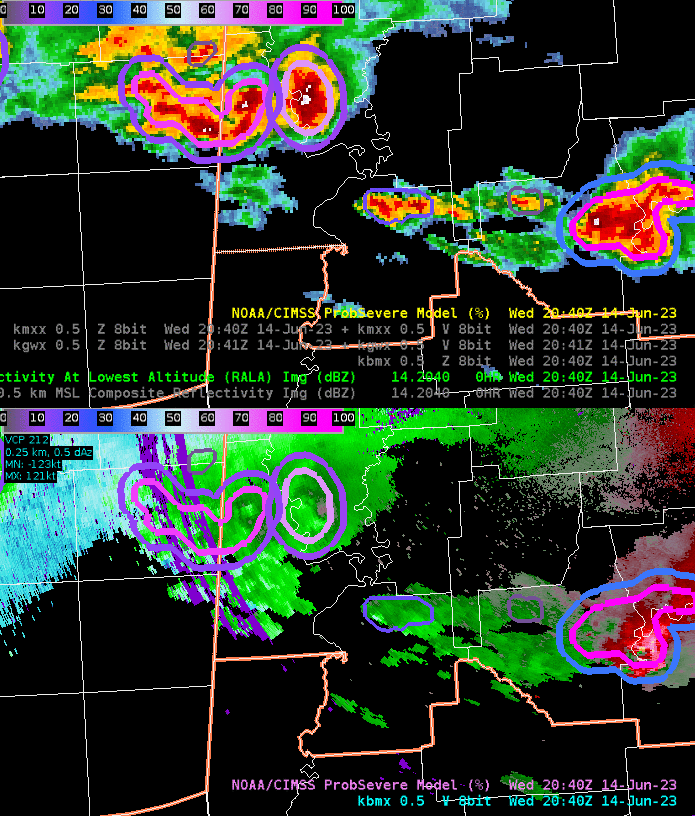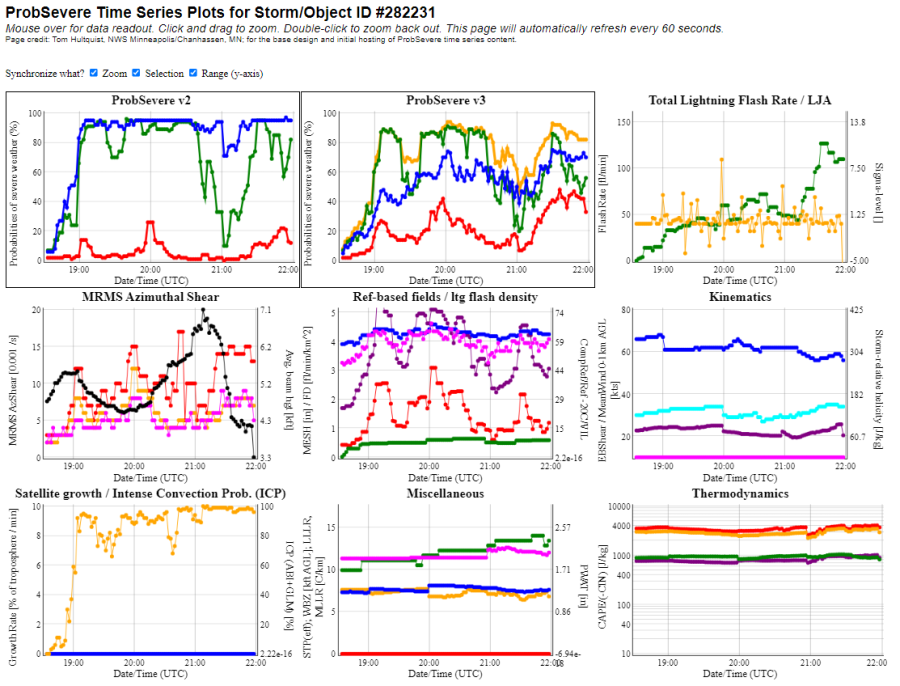Our group role played as BMX during an anomalously conducive environment for severe weather consisting of very high instability and very high shear. My position was warning met, sectorized for the western half of the CWA.

ProbSevere helped considerably in triaging which storms deserved attention, and which storms were trending in such a way that warranted a warning decision and/or adjustment. A combination of several supercells that would merge with other cells and evolve into clusters and bowing quasi-linear structures made it difficult to have a comfortable handle on storm behavior and associated hazards. This was compounded by the fact that radar data from the favored radar site, KBMX, was dropping out at times. While other datasets were referenced (satellite, surface observations, storm reports, objective analysis, etc.), ProbSevere felt like it gave the biggest helping hand in warning decisions during this complex scenario.

Looking in the southwest portion of the CWA around 20:30 – 22:00 UTC, ProbSevere signaled the diminishing probabilities associated with a bowing segment that earlier resulted in an 82 mph wind gust within eastern MS as convection was decaying rapidly. This helped grow confidence in holding off on a warning as it entered BMX’s CWA.
ProbSevere also pointed at a cluster of storms increasing in potential for severe hazards. This was helpful given the noisy velocity data, higher than desired sample height (closest radar sampled ~5-8kft), and likely complications regarding wind vectors having some orthogonal component to the radar radial. Essentially, ProbSevere provided clarity and continuity in a noisy radar situation increasing confidence in storm behavior.
Having discussion with a developer, I expressed how useful it was to not only have a time series to view trends in overall probabilities of severe hazards, as well as of each hazard (i.e. hail, wind, tornado), but also time series of the data that drives the probabilities like those offered by CIMSS.

The above time series corresponds to the cluster of storms in southwest BMX around 20:30 – 22:00 UTC (link). Notice in the time series the local minima in probabilities within ProbSevere v3 around 21:00 UTC (~47%) followed by a notable increase in probabilities, exceeding 80% around 20 minutes later. This trend in local minima followed by increasing probabilities was more obvious than ProbSevere v2. Looking at the individual inputs, this was likely driven by an increase in things like Azimuthal Shear, VIL, MESH, Lightning attributes, along with other environmental attributes.
– 0SMBLSN
